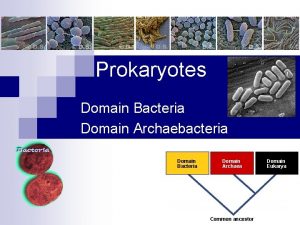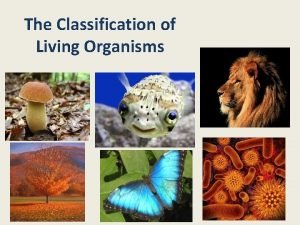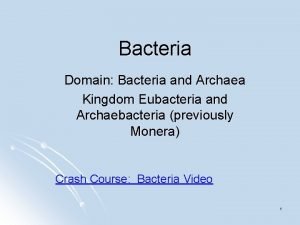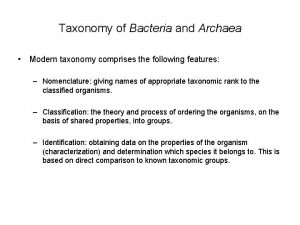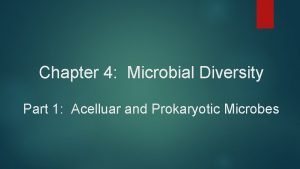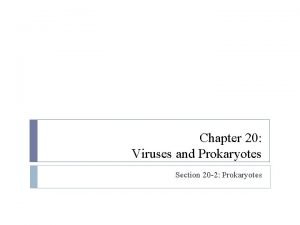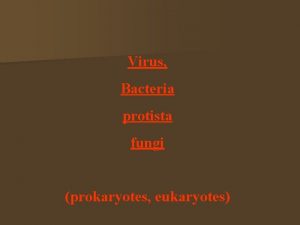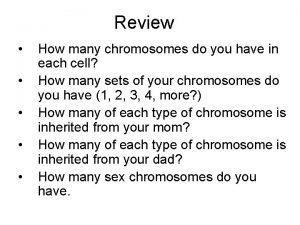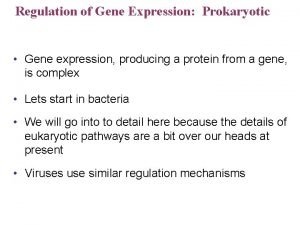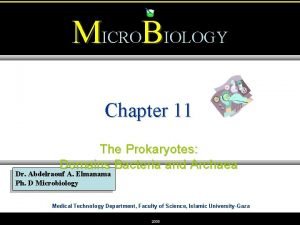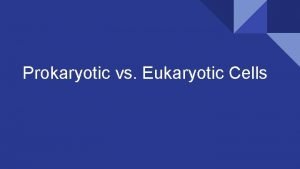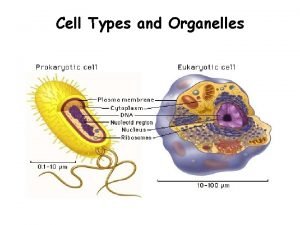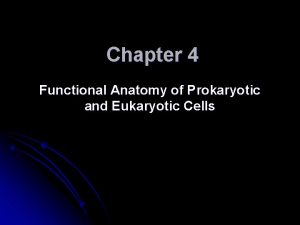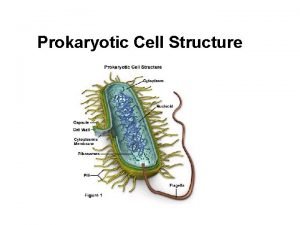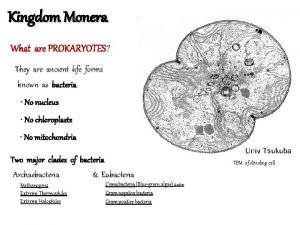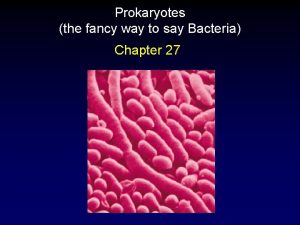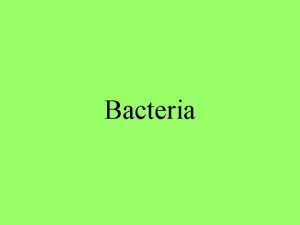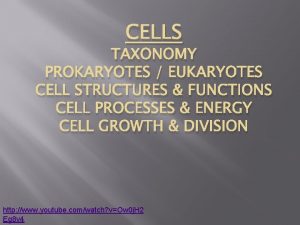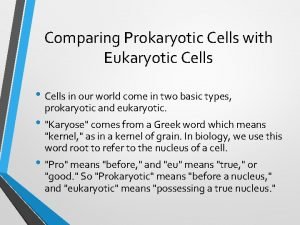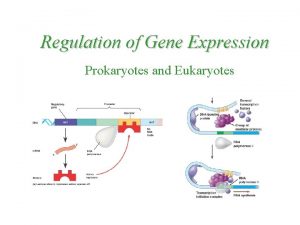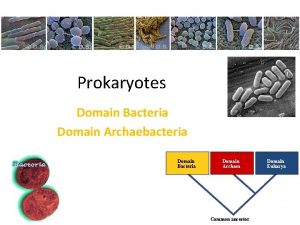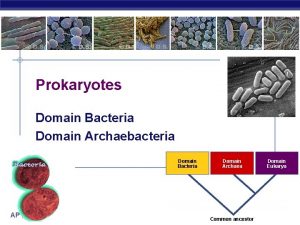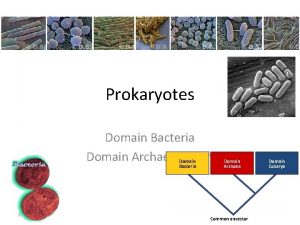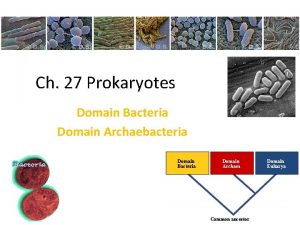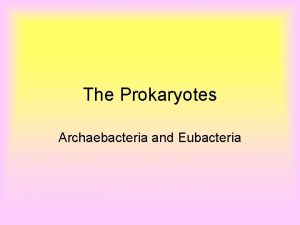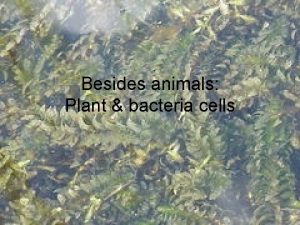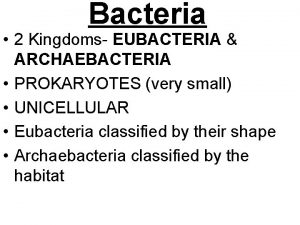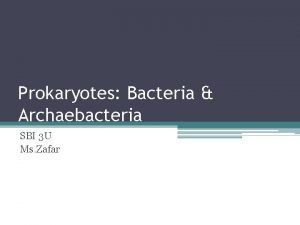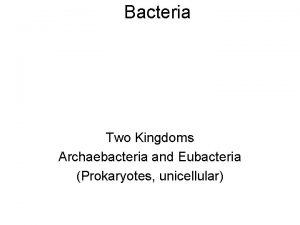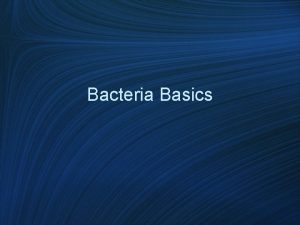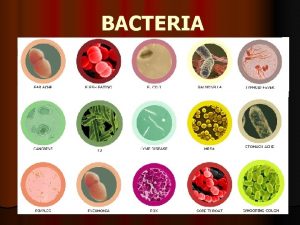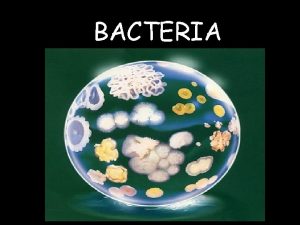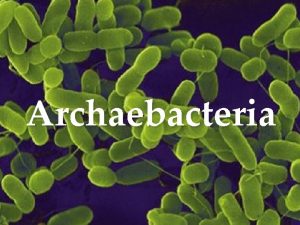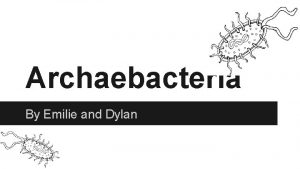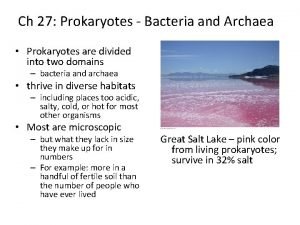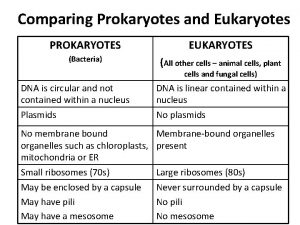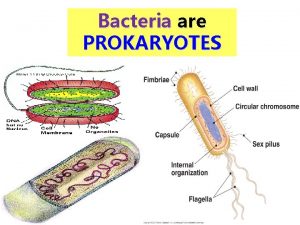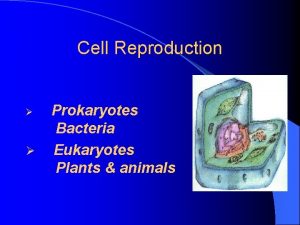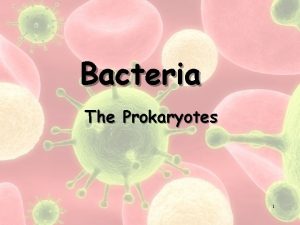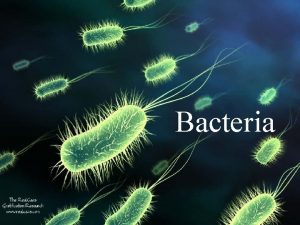Prokaryotes Domain Bacteria Domain Archaebacteria Domain Bacteria Domain

Prokaryotes Domain Bacteria Domain Archaebacteria Domain Bacteria Domain Archaea Common ancestor Domain Eukarya

Bacteria live EVERYWHERE! n Bacteria live in all ecosystems ¨ on plants & animals ¨ in the soil ¨ in depths of the oceans ¨ in extreme cold ¨ in extreme hot ¨ in extreme salt ¨ on the living ¨ on the dead Microbes always find a way to make a living!

Bacterial diversity rods and spheres and spirals… Oh My!

Compare prokaryotes to eukaryotes on the basis of…. Size n Genome n Reproductive strategies n

eukaryote cell Prokaryote Structure n Unicellular ¨ bacilli, n cocci, spirilli Size ¨ 1/10 n n prokaryote cell size of eukaryote cell 1 micron (1 um) Internal structure ¨ no internal compartments no membrane-bound organelles n only ribosomes n ¨ circular n chromosome, naked DNA not wrapped around proteins

Prokaryote vs. Eukaryote Chromosome Prokaryote Eukaryote double helix

mitochondria Variations in Cell Interior cyanobacterium (photosythetic) bacterium aerobic bacterium chloroplast inter n for p al memb h r like otosynt anes a h (thyl chlorop esis l akoi ds) ast nes a r b em m l a n inter spiration drion n e for r mitocho a like e) a t s i (cr

Endosymbiosis n What evidence is there? Membranes DNA Reproduction

Prokaryote Cell Wall Structure Gram-positive bacteria peptide side chains cell wall peptidoglycan plasma membrane That’s important for your doctor to know! protein peptidoglycan = polysaccharides + amino acid chains lipopolysaccharides = lipids + polysaccharides Gram-negative bacteria outer membrane of lipopolysaccharide s cell wall outer membran e peptidoglyca n plasma membran

Prokaryotic metabolism n How do bacteria acquire their energy & nutrients? ¨ photoautotrophs n photosynthetic bacteria ¨ chemoautotrophs n oxidize inorganic compounds ¨ nitrogen, sulfur, hydrogen… ¨ heterotrophs n live on plant & animal matter n decomposers & pathogens

What characteristics make bacteria so evolutionarily successful? Reproductive strategies n Mutation n

Bacterial Reproduction Asexual…. binary fission n Fast! E. coli can divide every 20 minutes! n Short generation time = quick evolution n No sex, no problem! n



Mutations n All 12 populations evolved common characteristics ¨ Increase in size ¨ Faster growth rates n Something unique around 31, 500 generations in one population – ability to metabolize citrate

Do the math Probability of mutation in a given E. coli gene 1 in 10 million per division (1 x 10 -7) n Every day, 2 x 1010 new E. coli in your intestine n Each E. coli has around 4, 300 genes n So how many new mutations in one day? n 9 million!

Swapping genetic info Plasmids n Transformation n Transduction n Conjugation n



Bacterial “Sex” F stands for……Fertility! Can be on plasmid or chromosome

Transduction n Phages transfer bacterial DNA

Diverse metabolic strategies Obligate aerobe n Obligate anaerobe n ¨ Fermentation ¨ Anaerobic respiration (NO 3 -, SO 42 - in place of O 2 as final electron acceptor) Facultative anaerobe n Nitrogen fixation…N 2 to NH 3 n ¨ why are these guys so important?

Archaeans Halophiles – “salt lovers” n Thermophiles – “heat lovers” n Methanogens – “methane creators” n ¨ Use CO 2 to oxidize H 2, producing CH 4

Bacteria as pathogens n Disease-causing microbes ¨ plant n diseases wilts, fruit rot, blights ¨ animal diseases tooth decay, ulcers n anthrax, botulism n plague, leprosy, “flesh-eating” disease n STDs: gonorrhea, chlamydia n typhoid, cholera n TB, pneumonia n lyme disease n

Bacteria as beneficial (& necessary) n Life on Earth is dependent on bacteria ¨ decomposers n recycling of nutrients from dead to living ¨ nitrogen n only organisms that can fix N from atmosphere ¨ ¨ ¨ help n needed for synthesis of proteins & nucleic acids plant root nodules in digestion (E. coli) digest cellulose for herbivores ¨ n cellulase enzyme produce vitamins K & B 12 for humans ¨ produce n fixation foods & medicines from yogurt to insulin

Got any Questions? ?
- Slides: 26
